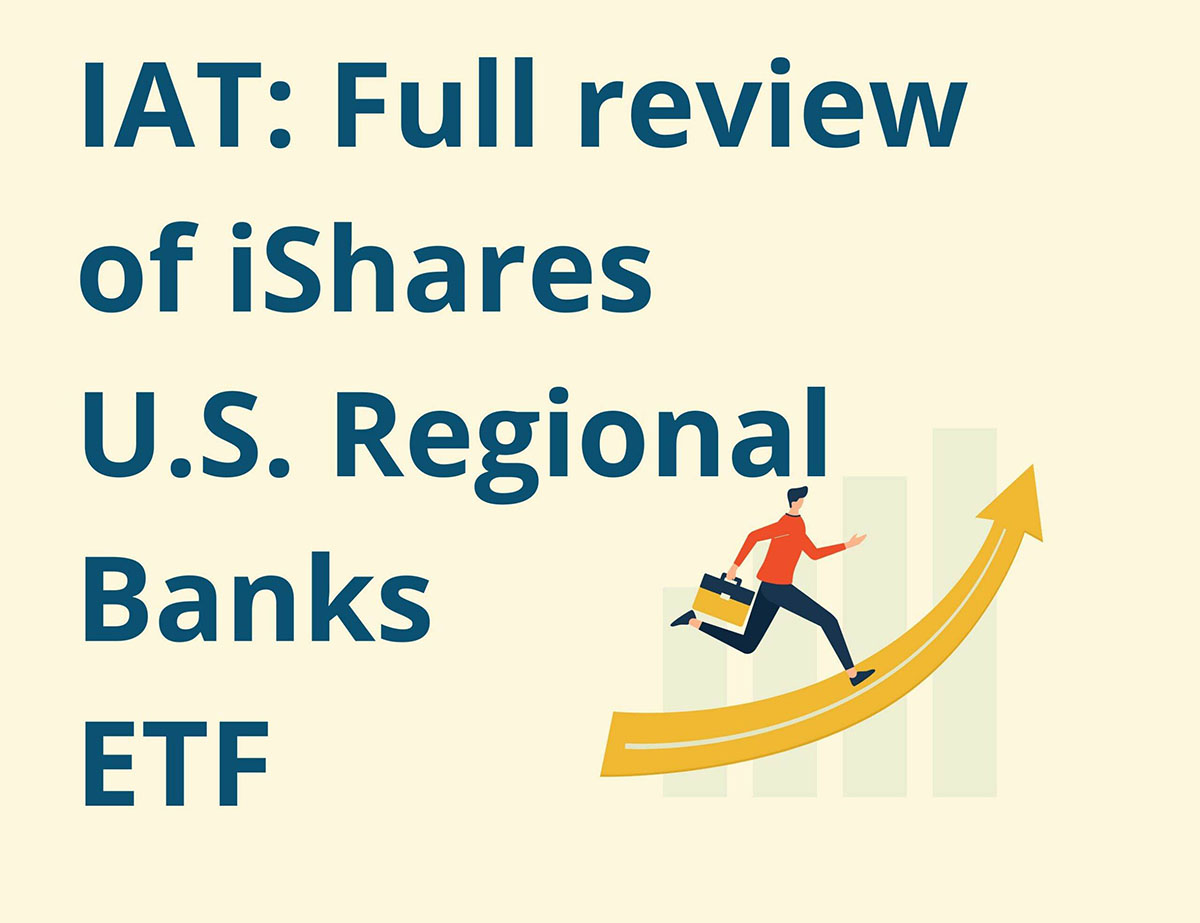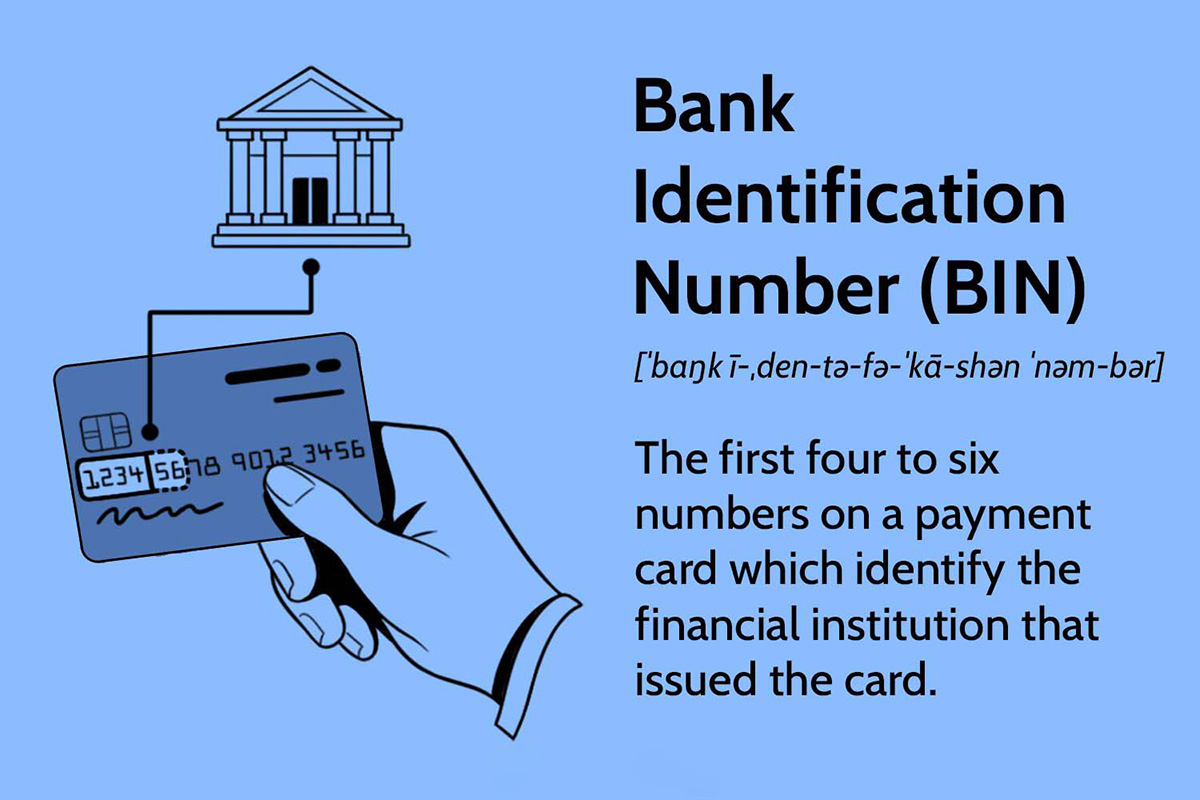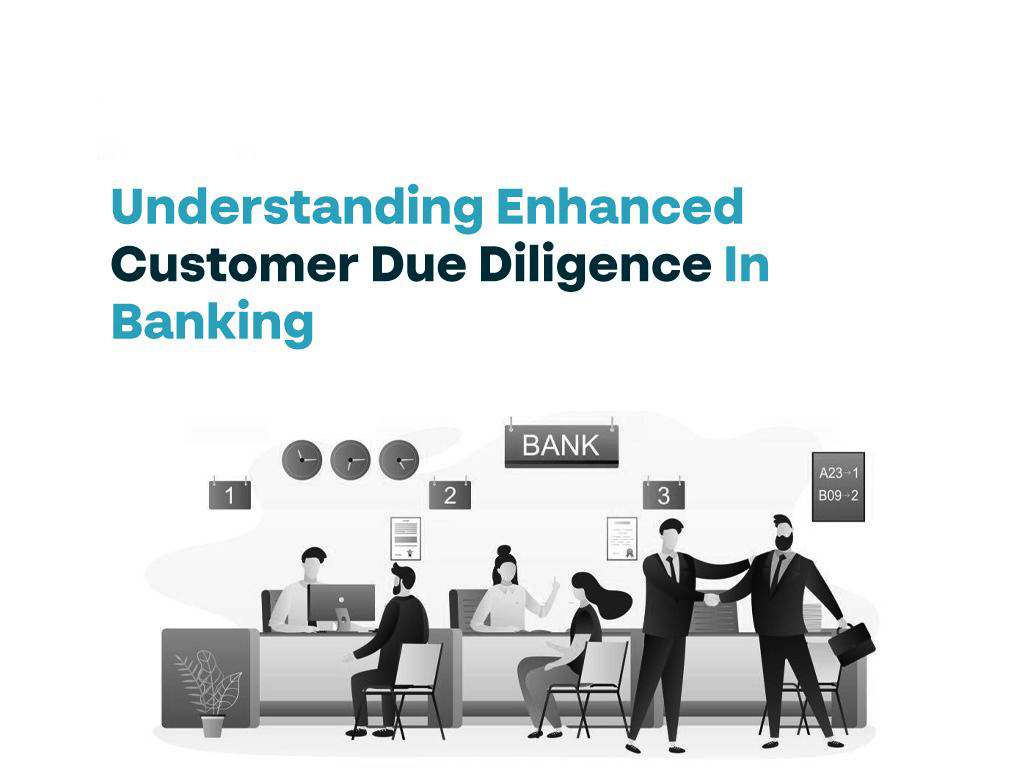

Finance
What Is CCD In Banking
Published: October 13, 2023
Discover the meaning of CCD in banking and how it relates to finance. Uncover the role this financial term plays in the banking industry.
(Many of the links in this article redirect to a specific reviewed product. Your purchase of these products through affiliate links helps to generate commission for LiveWell, at no extra cost. Learn more)
Table of Contents
Introduction
In the world of banking, technological advancements have revolutionized the way financial transactions are conducted. One such innovation is the Cash Concentration and Disbursement (CCD) system. CCD is a service offered by banks that enables businesses to efficiently manage their cash flow and streamline financial operations.
The CCD system works by consolidating funds from multiple accounts into a single centralized account, known as the concentration account. This allows businesses to have better control over their cash positions and optimize their liquidity management. Furthermore, CCD also facilitates disbursements, allowing businesses to make payments to vendors, suppliers, and employees electronically.
CCD is especially beneficial for businesses with multiple locations or subsidiaries, as it eliminates the need for manual consolidation of funds from different bank accounts. It simplifies cash management by providing real-time visibility of funds and automating the transfer of funds to the concentration account.
With its myriad advantages, CCD has become an indispensable tool for businesses of all sizes. Whether it’s a multinational corporation or a small startup, the ability to efficiently manage cash flow is crucial for sustainable growth and success.
In the following sections, we will delve deeper into CCD, exploring its benefits, how it works, and the future it holds for the banking industry. We will also discuss the security measures in place to safeguard CCD transactions and the challenges and risks that businesses and banks need to be aware of when utilizing this service.
Overview of CCD in Banking
Cash Concentration and Disbursement (CCD) is a specialized banking service designed to help businesses efficiently manage their cash flow. It enables businesses to consolidate their funds from multiple bank accounts into a single concentration account for better control and liquidity management.
CCD is primarily used by businesses with decentralized operations or those with subsidiaries in different regions. Instead of managing multiple bank accounts separately, CCD allows businesses to consolidate their cash in one location, streamlining their financial operations.
The primary objective of CCD is to help businesses optimize their cash utilization and enhance their working capital management. By consolidating cash into a central account, businesses can better assess their cash position and make informed decisions regarding investments, payments, and funding requirements.
Furthermore, CCD facilitates efficient disbursement of funds. Businesses can make electronic payments to vendors, suppliers, and employees, eliminating the need for manual checks or cash transactions. This not only saves time and resources but also enhances security and reduces the risk of fraud or theft.
CCD also offers businesses greater visibility and control over their cash flow. With real-time access to consolidated account information, businesses can monitor transactions, track balances, and generate reports for better financial analysis and decision-making.
Moreover, CCD simplifies the reconciliation process by providing comprehensive transaction details and electronic statements. This helps businesses reconcile their accounts more efficiently and reduces the risk of errors or discrepancies.
In summary, CCD in banking is a specialized service that allows businesses to consolidate their cash flow into a central account, enhance liquidity management, optimize cash utilization, streamline financial operations, and facilitate secure and efficient disbursements of funds.
Benefits of CCD
The Cash Concentration and Disbursement (CCD) system offers numerous benefits to businesses of all sizes. Let’s explore some of the key advantages:
- Improved Cash Visibility: CCD provides businesses with real-time visibility of their cash positions. By consolidating funds into a single concentration account, businesses can easily track and monitor their cash flow, making informed decisions regarding investments, payments, and funding requirements.
- Enhanced Liquidity Management: With CCD, businesses can optimize their cash utilization and enhance their working capital management. By having a consolidated pool of funds, businesses can efficiently allocate cash resources, reducing idle funds and investing surplus cash to earn interest or reduce borrowing costs.
- Streamlined Financial Operations: CCD simplifies financial operations by centralizing cash flow management. Instead of dealing with multiple bank accounts, businesses can consolidate their cash into one location, reducing the administrative burden and minimizing the risk of errors or discrepancies in cash management.
- Efficient Disbursement: CCD enables businesses to make disbursements electronically, eliminating the need for manual checks or cash payments. This not only saves time and resources but also improves security and reduces the risk of fraud or theft in the payment process.
- Cost Savings: By consolidating cash and streamlining financial operations, CCD helps businesses minimize costs associated with maintaining multiple bank accounts, manual processing of checks, and reconciliation efforts. It also reduces the risk of errors, which can lead to costly financial repercussions.
- Better Financial Analysis: CCD provides businesses with comprehensive transaction details and electronic statements, making it easier to analyze and track financial activities. This facilitates accurate and timely financial reporting, aiding in better budgeting, forecasting, and strategic decision-making.
- Enhanced Security: CCD transactions are conducted electronically, reducing the risk of loss or theft associated with traditional cash or check handling. Banks implement robust security measures to protect CCD transactions, including encryption, authentication protocols, and firewalls.
In summary, CCD offers businesses improved cash visibility, enhanced liquidity management, streamlined financial operations, efficient disbursement processes, cost savings, better financial analysis, and increased security. These benefits contribute to improved operational efficiency, better financial control, and overall growth and success for businesses.
Differentiating CCD from other Banking Services
While Cash Concentration and Disbursement (CCD) is a valuable banking service, it is important to understand how it differs from other banking services. Let’s explore the key differentiating factors:
- CCD vs. Cash Management: While CCD is a component of cash management, it focuses specifically on the concentration and disbursement of funds. Cash management encompasses a broader range of services, including cash flow forecasting, liquidity planning, and investment strategies. CCD is more transaction-centric, streamlining the movement of funds between accounts.
- CCD vs. Wire Transfers: Wire transfers enable businesses to transfer funds between different accounts, both domestically and internationally. However, CCD goes beyond simple fund transfers and provides businesses with the ability to consolidate funds from multiple accounts into a central account. CCD offers more comprehensive cash management capabilities, while wire transfers are primarily focused on transferring funds from one account to another.
- CCD vs. Automated Clearing House (ACH) Payments: ACH payments are electronic funds transfers that facilitate various types of payments, including payroll, vendor payments, and consumer transactions. While ACH payments are part of the CCD system, CCD encompasses a broader scope of services, including cash concentration, liquidity management, and real-time cash visibility.
- CCD vs. Electronic Funds Transfer (EFT): EFT refers to the movement of funds electronically between accounts. Although EFT can include various types of transactions, CCD specifically focuses on cash concentration and disbursement. CCD provides businesses with a centralized cash management solution, whereas EFT encompasses a wider range of electronic fund transfer services.
- CCD vs. Remote Deposit Capture (RDC): RDC allows businesses to deposit checks remotely by scanning and electronically transmitting the images to their bank. While RDC simplifies the check deposit process, CCD goes beyond check deposits and includes the consolidation and disbursement of funds. CCD offers a more comprehensive cash management solution, while RDC focuses only on check deposits.
In summary, CCD differentiates itself from other banking services by focusing specifically on cash concentration and disbursement. While other services like cash management, wire transfers, ACH payments, EFT, and RDC play a role in managing funds, CCD provides businesses with a centralized solution for efficient cash flow management, consolidated cash visibility, and secure electronic disbursements.
How CCD Works
The Cash Concentration and Disbursement (CCD) system works by utilizing technology to consolidate funds from multiple bank accounts into a central concentration account. Let’s dive into the process of how CCD operates:
- Enrollment: Businesses interested in utilizing CCD must first enroll with their bank to access this service. They will need to provide the necessary documentation and agreements to demonstrate their eligibility and compliance with banking regulations.
- Account Setup: Once enrolled, businesses work with their bank to establish the concentration account. The concentration account serves as the central repository for cash consolidation and disbursement.
- Data Integration: To enable the consolidation of funds, businesses need to establish a data integration mechanism with their bank. This typically involves electronic data interchange (EDI) or application programming interface (API) integration, allowing for seamless transmission of financial information between the business’s systems and the bank’s CCD system.
- Funds Concentration: After the account setup and data integration steps are completed, businesses can initiate the funds concentration process. This involves transferring funds from various subsidiary or regional accounts to the central concentration account. The frequency and timing of fund transfers can be determined based on the business’s needs and cash flow requirements.
- Disbursements: In addition to cash concentration, CCD also facilitates efficient disbursement of funds. Businesses can use the concentration account to make electronic payments to vendors, suppliers, and employees. These payments can be initiated through electronic transfers, ACH payments, or other secure payment methods supported by the bank.
- Reporting and Reconciliation: CCD provides businesses with comprehensive reporting capabilities. Businesses can access real-time information about their consolidated cash position, transaction histories, and account balances. This data helps in reconciling accounts, generating financial reports, and analyzing cash flow patterns.
It’s important to note that the specific processes and features of CCD may vary depending on the bank and the business’s requirements. Banks may offer additional features such as automatic sweeps, which transfer excess funds from the concentration account to interest-bearing accounts or investment vehicles to optimize cash utilization.
In summary, CCD works by enrolling businesses into the service, setting up a concentration account, integrating data systems, consolidating funds from various accounts into the concentration account, facilitating electronic disbursements, and providing comprehensive reporting and reconciliation capabilities.
CCD Transaction Process
The Cash Concentration and Disbursement (CCD) system involves a structured transaction process designed to facilitate efficient cash management for businesses. Let’s explore the typical steps involved in a CCD transaction:
- Data Transmission: Businesses initiate a data transmission process, typically through an electronic data interchange (EDI) or application programming interface (API), to transmit financial information to the bank’s CCD system. This data includes details about the subsidiary bank accounts, transaction amounts, and relevant transaction codes.
- Fund Requests: Based on the transmitted data, businesses can initiate fund requests, specifying the amounts to be transferred from the subsidiary accounts to the central concentration account. Fund requests can be made for specific dates or on a recurring basis, depending on the business’s cash flow needs.
- Fund Transfer: Once the fund requests are received by the bank’s CCD system, the funds are transferred from the subsidiary accounts to the central concentration account. This transfer can be done electronically, ensuring speedy and secure movement of funds.
- Disbursement Requests: Along with cash concentration, CCD also enables businesses to make disbursements electronically. To initiate disbursement requests, businesses provide the necessary details such as payee information, payment amounts, and payment instructions.
- Payment Processing: The bank’s CCD system processes the disbursement requests, verifying the availability of funds in the central concentration account. Once verified, the system initiates the electronic payment process, transferring the funds to the designated payees through secure payment channels such as electronic transfers or automated clearing house (ACH) payments.
- Transaction Monitoring: Throughout the entire CCD transaction process, businesses can monitor and track the status of their transactions. They have access to real-time information about fund transfers, disbursements, and account balances, providing visibility and control over their cash flow.
- Reporting and Reconciliation: As CCD transactions are processed, the bank’s CCD system generates comprehensive reports for businesses to reconcile their accounts. These reports include transaction histories, consolidated cash positions, and other relevant financial data. Businesses can use this information for financial analysis, budgeting, and reporting purposes.
The CCD transaction process is designed to streamline cash management and enhance operational efficiency for businesses. By consolidating funds and automating payment processes, CCD helps businesses optimize their cash flow, improve liquidity management, and alleviate manual processing burdens.
It’s important to note that the specific workflow and technical aspects of CCD transactions may vary depending on the bank’s systems and the business’s requirements. Banks may provide additional options and customization to meet the unique needs of their business clients.
In summary, the CCD transaction process involves data transmission, fund requests, fund transfers, disbursement requests, payment processing, transaction monitoring, and reporting/reconciliation. This process enables businesses to efficiently manage their cash flow and streamline financial operations through the centralized CCD system.
Security Measures in CCD
Given the sensitivity and importance of financial transactions, the Cash Concentration and Disbursement (CCD) system incorporates several robust security measures to protect businesses and their funds. Let’s explore some of the key security features implemented in CCD:
- Encryption: To ensure the confidentiality of data transmitted during CCD transactions, cutting-edge encryption algorithms are employed. Encryption scrambles the data, making it unreadable to unauthorized parties. Banks use industry-standard encryption protocols to safeguard sensitive information and maintain data integrity.
- Authentication: Proper authentication plays a critical role in verifying the identities of users accessing CCD systems. Multiple layers of authentication, such as passwords, user IDs, and security tokens, are used to ensure that only authorized individuals can initiate and approve transactions. Strong authentication mechanisms provide an additional layer of protection against unauthorized access.
- Firewalls and Intrusion Detection Systems: Banks employ firewalls and intrusion detection systems to protect CCD systems from unauthorized access and malicious activities. Firewalls act as a barrier between the CCD system and external networks, monitoring and filtering incoming and outgoing traffic. Intrusion detection systems detect and respond to suspicious activities, providing early warnings of potential security breaches.
- Fraud Detection: Advanced fraud detection mechanisms are implemented in CCD systems to identify and prevent fraudulent activities. These systems utilize sophisticated algorithms to analyze transaction patterns, detect anomalies, and raise alerts for suspicious behavior. Early detection of fraud helps mitigate risks and protects businesses from financial losses.
- Secure Network Connections: CCD systems rely on secure network connections, such as virtual private networks (VPNs) or secure sockets layer (SSL) encryption, to establish secure communication channels between the business and the bank. These encrypted connections ensure that data transmitted between parties cannot be intercepted or compromised.
- Access Controls: Access controls are essential in maintaining the confidentiality and integrity of CCD systems. Role-based access controls determine the level of access granted to different users based on their roles and responsibilities. Strict access controls ensure that only authorized individuals can view, edit, or approve CCD transactions.
Banks that provide CCD services adhere to rigorous security standards and regulations to protect businesses and their funds. They regularly update and enhance their security infrastructure to stay ahead of emerging threats and vulnerabilities.
Businesses utilizing CCD services can further enhance security by implementing best practices like regularly updating software, training employees on security awareness, and implementing strong password policies. Additionally, businesses should stay informed about the latest security threats and work with their bank to implement any recommended security measures.
In summary, security measures in CCD include encryption, authentication, firewalls and intrusion detection systems, fraud detection, secure network connections, and access controls. The integration of these measures ensures the highest level of security for businesses utilizing CCD systems.
Challenges and Risks in CCD
While the Cash Concentration and Disbursement (CCD) system offers significant benefits, there are also some challenges and risks that businesses need to be aware of. Let’s explore some of the common challenges and risks associated with CCD:
- Technical Glitches: Like any technology-based system, CCD can experience technical glitches or system failures. These issues can disrupt the flow of transactions and cause delays or errors in cash concentration and disbursement processes. Businesses should have contingency plans in place to mitigate the impact of such glitches and ensure smooth operations.
- Data Security Breaches: CCD involves the transmission and storage of sensitive financial information. There is always the risk of data security breaches, where unauthorized individuals gain access to confidential data. To mitigate this risk, businesses and banks must implement robust security measures like encryption, strong authentication, and regular security audits to protect sensitive information from unauthorized access or data leakage.
- Fraud and Cybersecurity Threats: CCD transactions can be targeted by fraudsters and cybercriminals. Phishing attacks, malware, social engineering, and other cybersecurity threats can lead to unauthorized access or fraudulent transactions. Businesses need to educate their employees about potential threats, implement fraud detection mechanisms, and stay vigilant to safeguard against fraudulent activities.
- Compliance and Regulatory Requirements: CCD transactions are subject to various regulatory guidelines and compliance requirements, such as anti-money laundering (AML) rules, Know Your Customer (KYC) regulations, and data privacy laws. Ensuring compliance with these regulations can be challenging and requires businesses to stay updated on evolving regulatory frameworks and implement appropriate measures to maintain compliance.
- Operational Complexity: CCD involves the consolidation of funds from multiple accounts and the management of complex cash flow arrangements. This can introduce operational complexities and challenges in terms of reconciling accounts, handling transaction data, and coordinating with multiple entities. Businesses need to have robust processes and systems in place to manage these complexities effectively.
- Dependency on Technology and Infrastructure: CCD relies heavily on technological infrastructure, including networks, servers, and software systems. Businesses are vulnerable to disruptions caused by technology failures, power outages, or cybersecurity incidents. It is crucial for businesses to have contingency plans and disaster recovery strategies in place to minimize the impact of technology-related disruptions.
- Vendor Reliability: Many businesses rely on third-party vendors or service providers to implement and operate CCD systems. While these vendors play a crucial role in ensuring seamless CCD operations, businesses need to carefully assess their reliability, security measures, and capabilities to avoid potential risks associated with vendor performance or service interruptions.
Despite these challenges and risks, proper planning, risk assessment, and proactive measures can help businesses mitigate and address potential issues related to CCD. It is essential for businesses to work closely with their banks, technology partners, and internal stakeholders to implement robust risk management strategies and ensure the smooth functioning of CCD operations.
In summary, challenges and risks in CCD include technical glitches, data security breaches, fraud and cybersecurity threats, compliance and regulatory requirements, operational complexity, dependency on technology and infrastructure, and reliance on third-party vendors. By identifying and addressing these challenges, businesses can navigate CCD implementation successfully and enjoy the benefits it offers.
Future of CCD in Banking
The future of Cash Concentration and Disbursement (CCD) in banking holds great promise as technology continues to advance and businesses increasingly look for streamlined cash management solutions. Here are some key trends that are shaping the future of CCD:
- Advanced Automation: As technology evolves, CCD is expected to become even more automated. Manual processes will be further reduced, and artificial intelligence (AI) and machine learning (ML) techniques will be leveraged to optimize cash flows, identify patterns, and automate decision-making processes. This will streamline operations, improve accuracy, and save businesses valuable time and resources.
- Real-Time Cash Visibility: The demand for real-time cash visibility is increasing, and CCD is well-positioned to meet this demand. Businesses are seeking instant access to consolidated cash positions, transaction details, and accurate cash forecasts. With advancements in technology and data integration, CCD will continue to provide businesses with up-to-the-minute visibility into their cash flow, enabling better financial decision-making.
- Expanded Integration and Connectivity: CCD will integrate more seamlessly with other banking services and financial management systems. Businesses will benefit from increased connectivity between CCD and accounting software, enterprise resource planning (ERP) systems, and other tools. This integration will enable businesses to streamline processes further, enhance data accuracy, and improve overall financial management efficiency.
- Mobile Capabilities: Mobile technology is transforming the way businesses operate, and CCD is no exception. The future of CCD will likely see increased mobile capabilities, allowing businesses to initiate and approve CCD transactions on the go. Mobile apps and secure mobile platforms will enable businesses to access real-time data, authorize payments, and monitor cash flow conveniently from their smartphones or tablets.
- Enhanced Security Measures: With the persistent threat of cyberattacks, the future of CCD will focus heavily on strengthening security measures. Banks will continue to invest in advanced security technologies, such as biometric authentication and behavioral analytics, to enhance transaction security and protect against evolving threats. Businesses can expect even more robust security protocols and authentication methods to safeguard their funds and data.
- Integration with Open Banking: Open banking initiatives are gaining traction worldwide, allowing customers to access and share their financial data securely with authorized third-party providers. CCD is likely to benefit from open banking by enabling greater connectivity and data sharing between banking systems and financial management tools. This integration will result in more comprehensive and accessible cash management solutions for businesses.
- Globalization and Cross-Border Transactions: As businesses expand their global footprint, the future of CCD will cater to the needs of cross-border transactions. CCD systems will evolve to support multi-currency capabilities, offer enhanced exchange rate management, and provide efficient cross-border payment options. This will further streamline cash management for businesses operating across different regions and currencies.
In summary, the future of CCD in banking is characterized by advanced automation, real-time cash visibility, expanded integration and connectivity, mobile capabilities, enhanced security measures, integration with open banking, and support for globalization and cross-border transactions. These trends will propel CCD to become an even more powerful tool for businesses, enabling them to efficiently manage and optimize their cash flow in an ever-evolving banking landscape.
Conclusion
The Cash Concentration and Disbursement (CCD) system has revolutionized cash management for businesses, offering efficient and streamlined processes that improve liquidity management, enhance financial control, and optimize cash utilization. CCD enables businesses to consolidate funds from multiple bank accounts into a centralized concentration account, providing real-time visibility and control over their cash flow.
Throughout this article, we explored the various aspects of CCD, including its overview, benefits, differentiation from other banking services, and how it works. We discussed the security measures implemented in CCD systems to protect businesses and their funds from potential risks and challenges. Moreover, we delved into the future of CCD, highlighting trends such as advanced automation, real-time cash visibility, enhanced security measures, and integration with open banking.
It is clear that CCD holds great promise for the future of banking. With continued technological advancements and increasing demand for streamlined cash management solutions, CCD will play an integral role in helping businesses optimize their cash flow, make efficient disbursements, and enhance financial decision-making.
However, it’s important to note that businesses should carefully assess their specific needs and consult with their banks to determine if CCD is the right fit for their cash management requirements. Each business has unique operational considerations and should consider factors such as transaction volumes, global operations, and cybersecurity capabilities when evaluating CCD as a viable solution.
In conclusion, CCD empowers businesses to take control of their cash flow and make informed financial decisions. With its ability to consolidate funds, automate processes, and enhance security measures, CCD provides businesses with the tools they need to navigate the complexities of cash management in an increasingly digital world.














